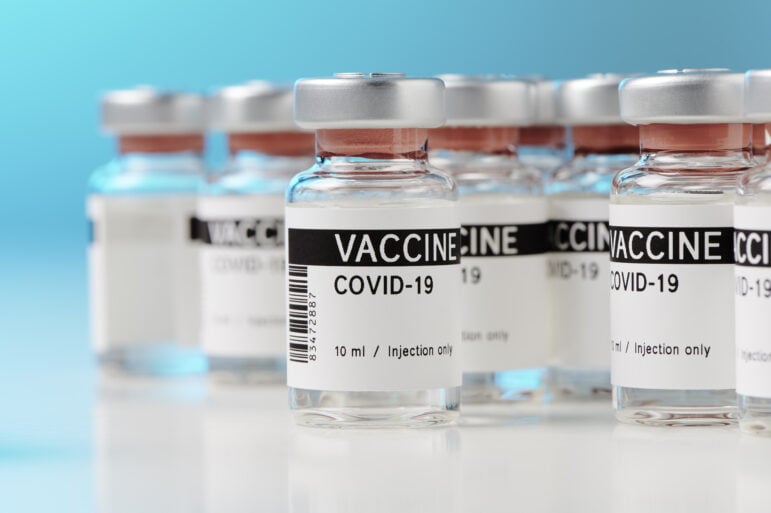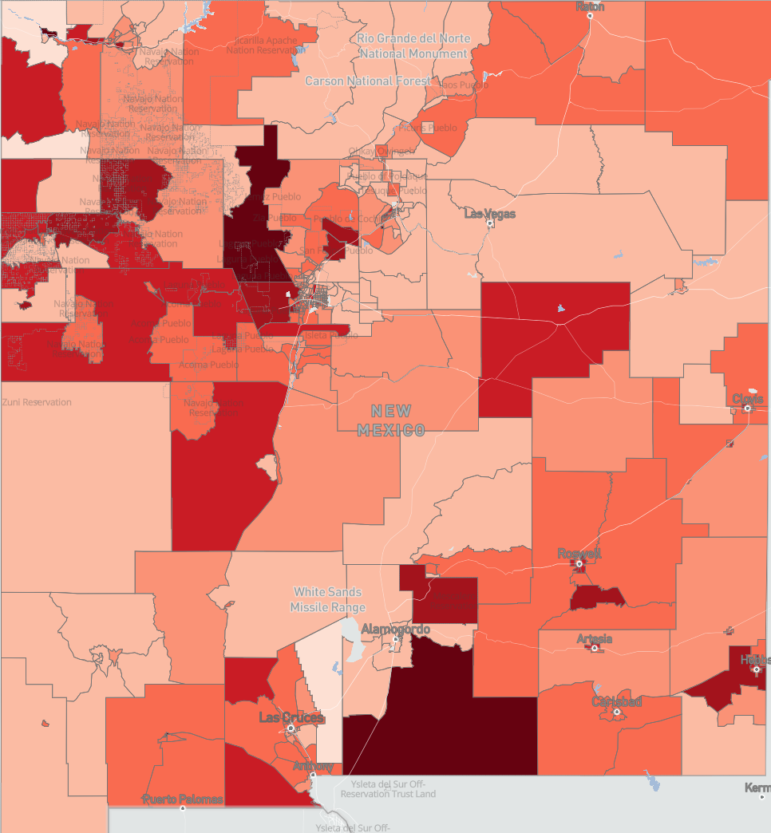
As New Mexico continues to amp up vaccine distribution, health officials don’t appear to be allocating a greater number of doses to those living in low-income areas that have been hit hardest by the COVID-19 pandemic.
Those areas include McKinley County, the southern border region, and communities in central New Mexico where some of the highest rates of positive cases, hospitalizations and deaths have occurred.
Other than some targeted distribution to congregant facilities like nursing homes and prisons, as well as health care and medical workers, the state is taking an approach of calling up individuals who’ve registered on the state vaccine portal. People are prioritized based on various risk categories, such as age, underlying conditions, or being an essential worker.
“…basically we’re randomizing them to see who will receive that vaccine dose,” New Mexico Health Secretary Dr. Tracie Collins said at a Wednesday afternoon press conference. It’s an approach designed to ensure there is no favoritism in vaccine access, Collins said.
But the hardest hit populations are low income communities that are disproportionately Native American and Latino, Black and other communities of color, and there is currently no publicly available information about whether or not vaccine distribution is sufficiently reaching these groups.

At a separate press briefing earlier in the day, Department of Health Deputy Secretary Laura Parajon said that data by race and ethnicity would be added to the public vaccine dashboard as soon as next week.
A state vaccine dashboard shows some counties that have had the highest levels of cases and deaths are seeing lower vaccination rates than other counties.
For instance, McKinley County has seen approximately 16% of its population infected with the virus, and has the second highest death total in the state by county. But it’s only vaccinated 9.2% of its population. Whereas neighboring Cibola County, with 9.5% of its residents having contracted the virus in the last year, has vaccinated 26% of its population. With a population that’s just a third that of McKinley County, Cibola has pushed out 500 more vaccines.
Collins said several factors might explain disparities at the county level when it comes to the rate of vaccine doses administered. One, some counties might have more people eligible to receive the vaccine, she said.
“If we look at the groups that we’re prioritizing currently who are eligible for a vaccine, and you look at the proportion of those people within a given county, that’s one factor that will drive the discrepancies by county,” Collins said. Other factors, she said, include provider capacity issues and the degree to which people are willing to get vaccinated.
Collins emphasized the need for effective communications to reach the most vulnerable populations.
The latest vaccine distribution numbers show New Mexico has given 291,742 of the 316,150 vaccines available to the state so far. New Mexico Department of Health Communications Director Matt Bieber said those numbers include vaccines distributed by both the state of New Mexico and the Indian Health Service.
So far, 67,000 New Mexicans are fully vaccinated after receiving their second dose.
New Mexico state health officials said its vaccine allotment will continue to increase next week, with 59,500 going out each week. That’s good news for the 560,000 people who’ve registered so far on the state vaccine portal.
Bryant Furlow contributed to this report.